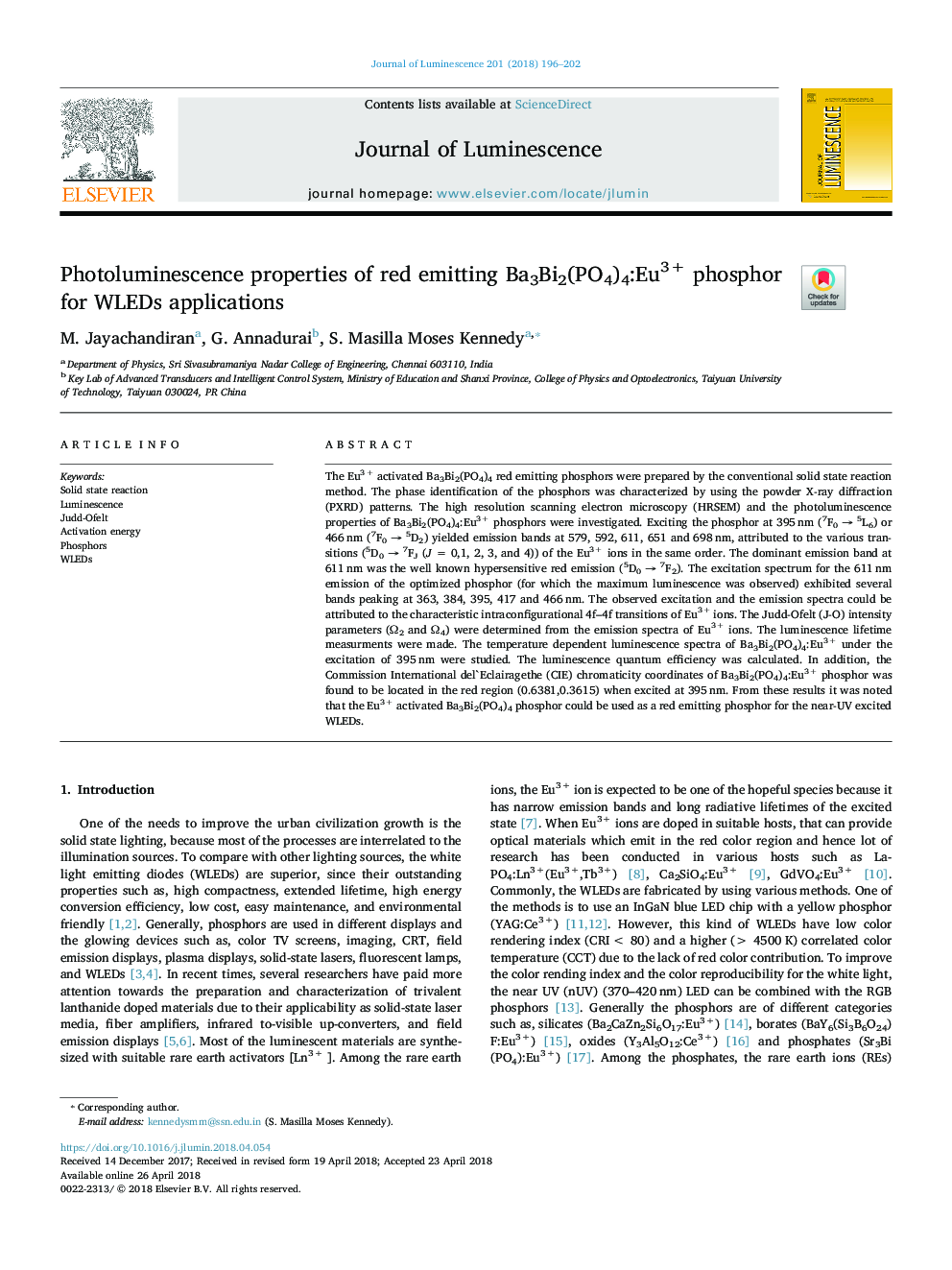| Article ID | Journal | Published Year | Pages | File Type |
|---|---|---|---|---|
| 7839938 | Journal of Luminescence | 2018 | 7 Pages |
Abstract
The Eu3+ activated Ba3Bi2(PO4)4 red emitting phosphors were prepared by the conventional solid state reaction method. The phase identification of the phosphors was characterized by using the powder X-ray diffraction (PXRD) patterns. The high resolution scanning electron microscopy (HRSEM) and the photoluminescence properties of Ba3Bi2(PO4)4:Eu3+ phosphors were investigated. Exciting the phosphor at 395â¯nm (7F0 â 5L6) or 466â¯nm (7F0 â 5D2) yielded emission bands at 579, 592, 611, 651 and 698â¯nm, attributed to the various transitions (5D0â7FJ (J = 0,1, 2, 3, and 4)) of the Eu3+ ions in the same order. The dominant emission band at 611â¯nm was the well known hypersensitive red emission (5D0 â 7F2). The excitation spectrum for the 611â¯nm emission of the optimized phosphor (for which the maximum luminescence was observed) exhibited several bands peaking at 363, 384, 395, 417 and 466â¯nm. The observed excitation and the emission spectra could be attributed to the characteristic intraconfigurational 4f-4f transitions of Eu3+ ions. The Judd-Ofelt (J-O) intensity parameters (Ω2 and Ω4) were determined from the emission spectra of Eu3+ ions. The luminescence lifetime measurments were made. The temperature dependent luminescence spectra of Ba3Bi2(PO4)4:Eu3+ under the excitation of 395â¯nm were studied. The luminescence quantum efficiency was calculated. In addition, the Commission International del`Eclairagethe (CIE) chromaticity coordinates of Ba3Bi2(PO4)4:Eu3+ phosphor was found to be located in the red region (0.6381,0.3615) when excited at 395â¯nm. From these results it was noted that the Eu3+ activated Ba3Bi2(PO4)4 phosphor could be used as a red emitting phosphor for the near-UV excited WLEDs.
Related Topics
Physical Sciences and Engineering
Chemistry
Physical and Theoretical Chemistry
Authors
M. Jayachandiran, G. Annadurai, S. Masilla Moses Kennedy,
